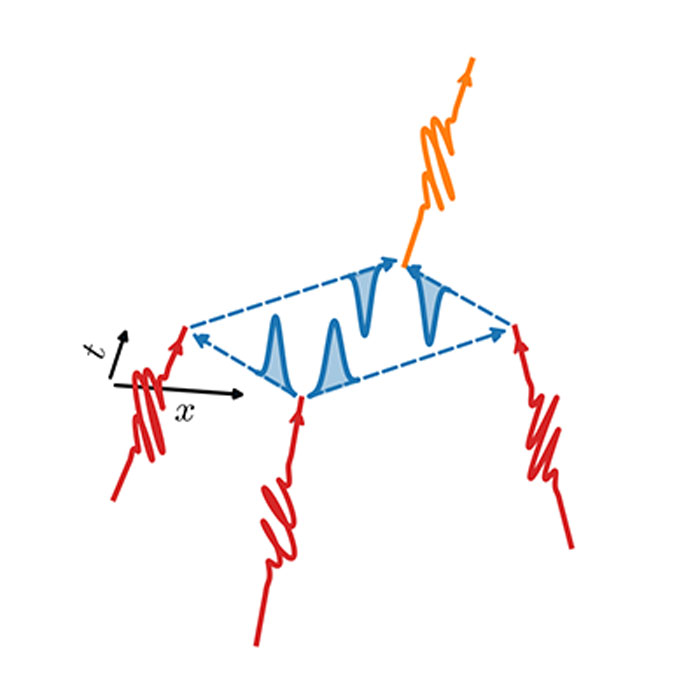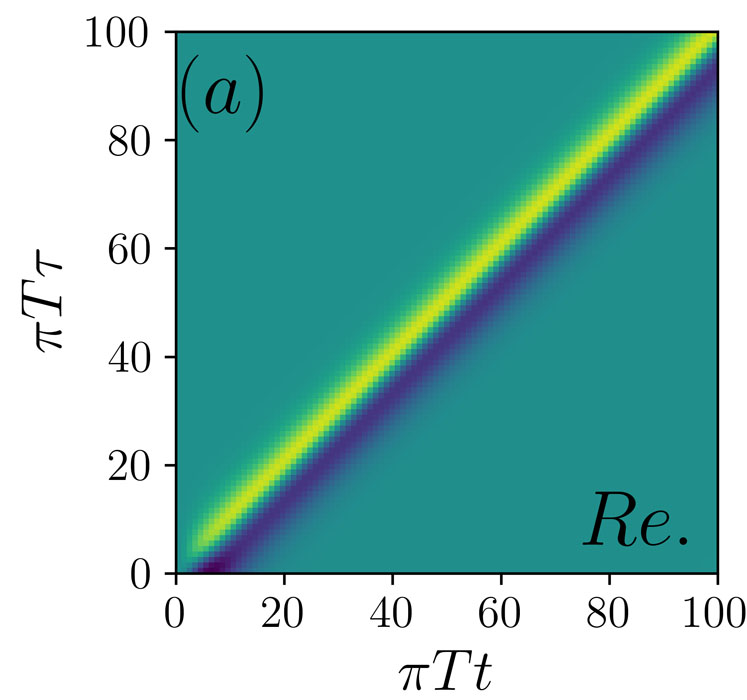Photon Echo from Lensing of Fractional Excitations in Tomonaga-Luttinger Spin Liquid
PI of Joint-use project: Y. WanHost lab: Oshikawa Group
Physicists routinely diagnose the properties of a material by its linear responses to external stimuli. The recently developed nonlinear spectroscopy measures nonlinear optical responses to obtain more information on the material. Yet, it is often unclear if there is a straightforward connection between such nonlinear responses and the material’s properties, especially when its constituent particles strongly interact with one another. We addressed this question by studying theoretically a prototypical strongly interacting system, the Tomonaga-Luttinger spin liquid. Tomonaga was the first to point out that the low-energy excitations of fermions in one dimensions can be described in terms of quantized sound waves (phonons). Subsequent studies have established that the quantum theory of sound waves, which is now called Tomonaga-Luttinger liquid, can describe the universal low-energy physics of a wide variety of one-dimensional critical quantum many-body systems. This includes critical one-dimensional quantum spin systems, which are regarded as Tomonaga-Luttinger spin liquids.
A remarkable feature of the Tomonaga-Luttinger spin liquids is “fractionalization” of the spin excitations. In ordered magnets, the elementary excitation corresponds to a single spin flip and called “magnon”. A single magnon is created by an absorption of photon (or a scattering of neutron), resulting in a sharp peak in the spectrum of linear response. In contrast, in the Tomonaga-Luttinger spin liquid, the single spin flip caused by an absorption of photon fractionalizes into two “spinon” excitations. This leads to a continuum in the linear response spectrum. While this “two-spinon continuum” is a characteristic signature of the fractionalization, the absence of the sharp peak makes the analysis difficult.
We analyzed nonlinear optical responses of the Tomonaga-Luttinger spin liquids in the context of terahertz (THz) two-dimensional coherent spectroscopy (2DCS), which is developing rapidly in recent years. We find a direct link between a specific nonlinear response, known as photon echo, and the dynamical properties of the excitations in this system.
The central finding in our work was that we can recover the sharp peak even in the Tomonaga-Luttinger spin liquid with the fractionalized spinon excitations, if we look at the nonlinear responses in a particular manner. The photon echo is measured by three successive optical pulses. The sharp response appears as a surge in the response after the last pulse. In the Tomonaga-Luttinger spin liquid, we trace the origin of the photon echo to a unique “lensing” phenomenon: The first pulse creates a pair of spinons moving in opposite directions. The second and third pulses change their directions of motion. These two excitations thus come back toward each other and reunite, thereby giving rise to the echo. Dissipation and dispersion effects, which suppress the lensing phenomenon, are sensitively picked up by the echo signal. This will make the 2DCS a very useful experimental probe to study these effects, which would be quite difficult with conventional experimental measurements.
Our work thus uncovers one aspect of the many uses of the nonlinear spectroscopy and related dynamical phenomena. We believe that more interesting physics is yet to be explored in the nonlinear responses of strongly correlated systems, and hope that our work will stimulate further theoretical and experimental studies.
References
- [1] Z.-L. Li, M. Oshikawa, and Y. Wan, Phys. Rev. X 11, 031035 (2021).


